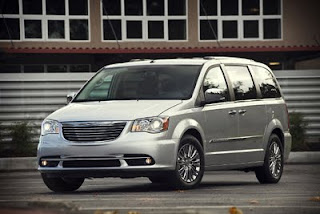 |
| 2011 Cadillac CTS Coupe |
Although most Cadillac vehicles still have a way to go to satisfy as drivers’ machines, the second-generation CTS has appeared on our past three 10Best lists. In awarding its 2010 trophy, we called it “maybe the best American car ever made.” High praise, and its combination of unapologetically brash styling, modern luxury, and strong performance credentials—especially in high-po V spec—backs it up. For 2011, the new CTS coupe joins the sedan and wagon, adding more style and a higher concentration of performance to the CTS’s winning formula.
Stunning Exterior Styling, Largely Familiar Cockpit
The CTS coupe is one of those cars that love the camera, and it’s no less stunning in the flesh. Walking around the car, one notices several aspects of the design easily missed in photographs, such as the parallel “light catcher” lines helping to break up the tall body sides, the tastefully glitzy twin center-mounted tailpipes, the remarkably seamless-looking joint between the body-side stamping and the roof, and the center spine that travels all the way back over the car’s huge rump. The windshield is two degrees “faster” up front than the sedan’s, and the razor-sharp taillamps and the CHMSL spoiler also have aerodynamic-enhancing properties. The only unfortunate bits are credit-card-sized spacer panels above the recessed, solenoid-actuated door releases; they mar an otherwise perfect waistline. In any case, there is visual drama from every angle, and it works.
Inside, most CTS sedan components are imported without change, although the mood is intensified due to a lower mounting point for the seats, dropping occupants roughly an inch lower into the dash and console architecture. The window sills are high, making arm-out-the-window cruising a bit awkward, but surprisingly, the super-high rear end doesn’t gobble up every shred of rearward vision. It feels purposeful, and we found ourselves very comfortable during our drive.
Amped-Up Performance
Cadillac’s product planners wanted to give the coupe a higher focus on performance. They started by skipping the sedan’s entry-level 270-hp, 3.0-liter V-6 and making standard the direct-injected 3.6-liter V-6. It delivers 304 hp and 273 lb-ft of torque, available at 6400 and 5200 rpm, respectively. As in the sedan, this engine comes with six-speed manual or automatic transmissions, the latter featuring manual shifting capability via the shift lever or buttons on the back of the upper steering-wheel posts (right for upshifts, left for downshifts). All-wheel drive is available, although we didn’t have the opportunity to drive a CTS so equipped; the only cars we drove were rear-drivers with automatics. In that configuration, the final-drive ratio is up to 3.73:1 from 3.42:1 to add some spring to the coupe’s off-the-line step. A unique-to-the-coupe exhaust system not only directs spent air through those sexy center-mounted pipes but also allows a bit more sound to tickle the driver’s ears in the process.
On the road, these alterations change the character of the CTS. Acceleration is strong, thanks to that more aggressive final drive. Handling feels considerably sharper as well, chalked up to the combination of the wider (by two inches) rear track, staggered-width wheel-and-tire combos (235/50 front and 265/45 rear with the 18-inch wheels; 245/45 front and 275/40 rear with the 19s), stiffer springs, and thicker rear anti-roll bar.
We’ll have to strap our test gear to a CTS coupe to determine the measurable performance differences between it and the sedan, but on the challenging, unpredictable, and wildly twisted roads surrounding California’s gorgeous Napa Valley and Lake Berryessa, the two-door CTS remained absolutely glued to the rough pavement, even in places where the road literally broke apart as we pounded over it. Meanwhile, the powerful brakes demonstrated remarkable resistance to fade, and the steering proved loyal and communicative. Shifts, although not lightning quick, still came speedily enough when summoned by the buttons. (We tried the sport mode, but it got a little aggressive with downshifts at times, so we generally stuck with the full manual mode.) Confidence built quickly as we acclimated to the coupe’s high level of grip. At every break in the route, we arrived energized and wanting more time at the wheel—not something we’d say about every vehicle we’ve driven on these brutal roads.
Something V This Way Comes
CTS coupe pricing starts at $38,990 for the rear-wheel-drive model equipped with the automatic, rear park assist, power seats, 18-inch wheels, keyless operation, and a Bose sound system. Selecting the manual transmission gives a $1300 saving but requires the $2090 summer-tire performance package. The $43,430 Performance Collection model adds HID headlights, leather seats, and a surround-sound stereo with a 40-gig hard drive and USB input. Jump up to the $47,835 Premium Collection, and enjoy ambient interior lighting, heated and cooled front seats, a heated steering wheel, genuine wood trim, a rearview camera, and navigation. All-wheel drive is a $1900 option. For comparison, a rear-drive BMW 335i coupe starts at $45,000 or so and will run well over $50,000 with similar equipment. Soon after launch, the CTS-V coupe will arrive with its monstrous 556-hp, 6.2-liter supercharged V-8. It will run a rather reasonable (for the performance) $62,990, and it comes with Brembo brakes, magnetorheological adaptive shocks, and 19-inch wheels with performance tires.
The standard and V CTS coupes will be heavily featured in upcoming advertising; Cadillac tells us the brand intends to display more bravado in relaying the virtues of its cars. Given the goodness of the CTS sedan and wagon, and now this coupe—and provided the upcoming XTS, ATS, and flagship models can display the same sort of competence—we’d say Cadillac deserves to thump its chest a bit.
 |
| 2011 Cadillac CTS Coupe |
 |
| 2011 Cadillac CTS Coupe |
 |
| 2011 Cadillac CTS Coupe |
 |
| 2011 Cadillac CTS Coupe |

















































